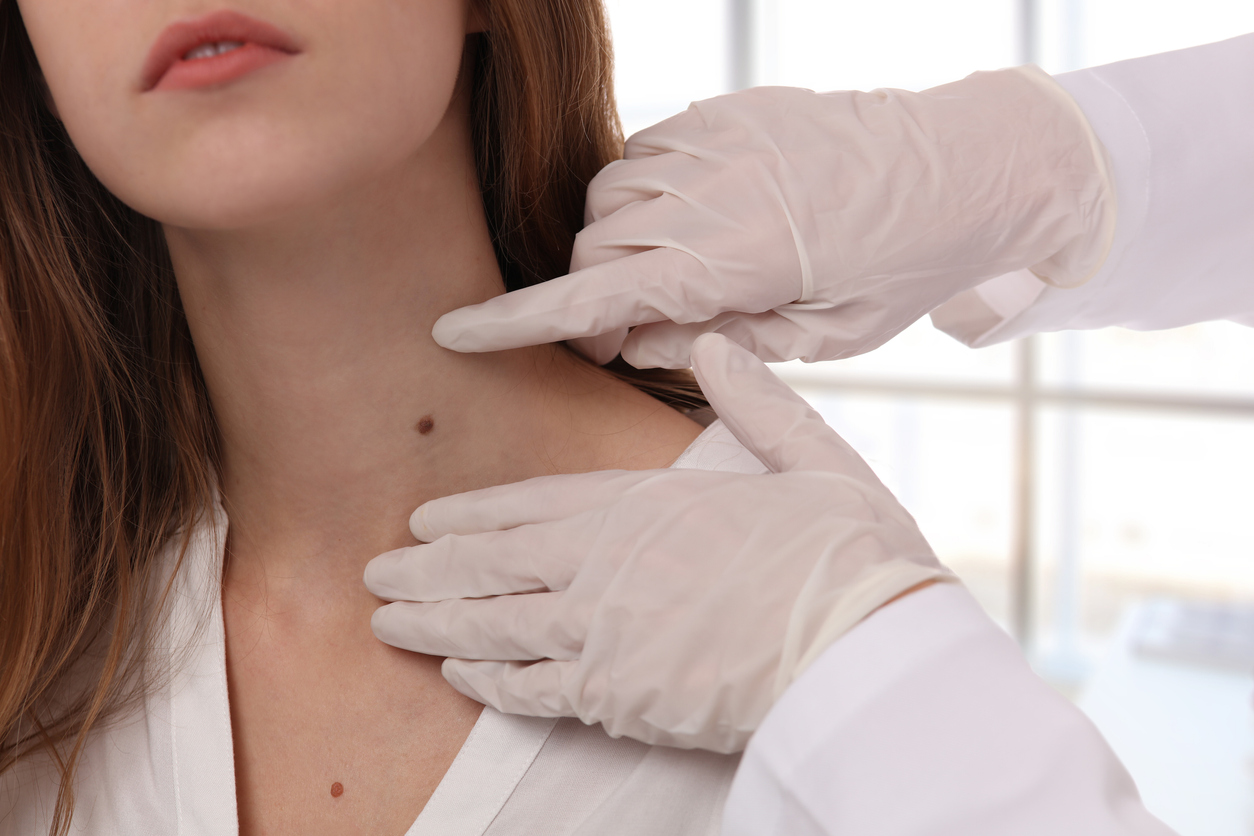The Number One Skin Cancer Symptom That People Ignore
Most of us know that wearing sunscreen is an easy and effective way to prevent skin cancer. It’s a simple step to add to your daily routine, and yet many people don’t do it—perhaps one reason that skin cancer is the most common cancer in the U.S., according to the Skin Cancer Foundation. When skin cancer is detected early, the five-year survival rate is 99 percent, the Foundation reports, yet more than two people die of skin cancer in this country every hour. When it comes to skin cancer, it’s crucial that people know what to look for—but one symptom in particular is often ignored. Read on to find out what it is, and when to head to the dermatologist for a checkup.
READ THIS NEXT: If You Notice This on Your Face, Get Checked for Cancer.

The Mayo Clinic says skin cancer most often occurs on “the scalp, face, lips, ears, neck, chest, arms and hands, and on the legs in women.” But the site adds that “it can also form on areas that rarely see the light of day—your palms, beneath your fingernails or toenails, and your genital area.”
The three main types of skin cancer are basal cell carcinoma, squamous cell carcinoma, and melanoma, their experts explain. Basal cell and squamous cell carcinomas both tend to occur on sun-exposed parts of the body, while melanoma “can develop anywhere on your body, in otherwise normal skin or in an existing mole that becomes cancerous.”

Irregular moles are a common sign of skin cancer, and keeping an eye out for them is a good way to catch any troublesome spots before they get worse. “The ABCD guide can help you check your moles and detect skin cancer early,” advises Cheryl Rosen, MD, Director of Dermatology at BowTied Life.
“A is for asymmetry,” she explains. “Look for moles that are asymmetrical, or uneven.” B stands for border: “Be on the lookout for irregular or jagged borders on moles,” she says. C is for color, as melanomas can range from black to pink. And D is for diameter. “Moles that are larger than 6mm may be a sign of melanoma,” Rosen explains, although she cautions that moles may start smaller and grow over time.

What’s not as commonly known is that skin cancer can manifest as a pimple-like bump on the skin, rather than a mole. When this happens, some people may ignore or dismiss it. Basal cell carcinoma (BCC) grows slowly and may look like a “harmless pimple, scar, or sore,” warns the AAD.
So how can you determine if a newly noticed bump on your skin is merely an annoying pimple, or something more serious? “One of the most surefire ways to tell the difference between a pimple or skin cancer is whether or not the bump goes away,” according to the GentleCure blog. “Even the deepest of pimples will begin to fade over time, but skin cancer requires professional treatment.” A blemish caused by skin cancer will grow and change in appearance, says the site, whereas “the average pimple stays on the skin for about a week and will begin to subside after popping it.”
For more health news sent directly to your inbox, sign up for our daily newsletter.

Because people are so familiar with moles as a symptom of skin cancer, they may ignore other warning signs. “Sometimes, the first sign of skin cancer is a rough area of red or brown skin that resembles a scab or wart,” reports the Moffitt Cancer Center.
It’s also important to know that while skin cancer symptoms can occur externally, certain warning signs don’t manifest on the skin at all. “Melanoma near the lungs may lead to shortness of breath, while melanoma on the head can result in headaches or vision changes,” advises Moffitt.
Familiarizing yourself with the ways skin cancer can manifest is an important component of self-exams. “Skin cancer is very treatable when caught early, but it can be deadly if left untreated,” warns Rosen. “So always check your skin for any changes and see a doctor if you have any concerns.”
" Conservative News Daily does not always share or support the views and opinions expressed here; they are just those of the writer."





